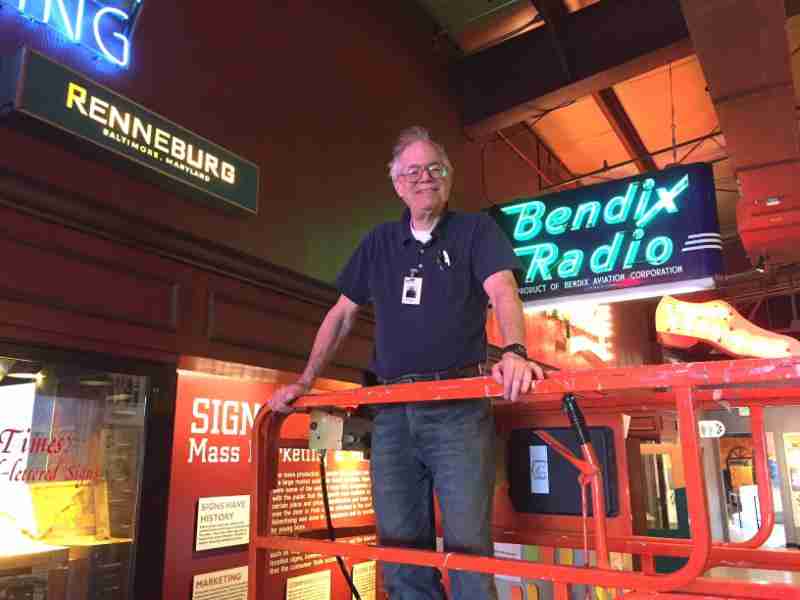Thank you for connecting, thank you for giving, thank you for keeping the stories of Baltimore’s industrial history alive. We are stronger with you.
Originally from Queens in New York City, Phil Levery decided to volunteer at the BMI a few years ago.
Once a week, Phil can be found in the museum addressing tasks ranging from fixing machine shop equipment and neon signs to performing plumbing and electrical work.
Phil is handy in many areas, applying his years of experience working on hi-tech, mechanical, and industrial equipment at local factories and agencies such as NASA and Westinghouse, now known as Northrop Grumman, to help make a fun and engaging space for the community.
[quote color=”color3″ boxed=”yes”]As I was approaching 70 and about to retire, I decided to cut back on my work hours and dedicate some of my time to volunteering. The BMI looked interesting—it had a lot of old stuff, a machine shop, and a lot of goodies that I could work on. At the same time the museum needed a lot of help so I decided to become a volunteer.[author]Phil Levery[/author][/quote]
The Machine Shop is Phil’s favorite gallery, because of all the machinery on display. “I used to work on more modern types of equipment and it’s good to see that basic machines like those in the Machine Shop still exist today even though they’re run by computers instead of people. They work the same way—mechanically things like belts may have been replaced by motors, but the way they perform and the jobs they do function just like these old machines.”
Visit the BMI’s Connection Factory to connect with stories that show how education, exhibitions, and partnerships strengthen our community.
